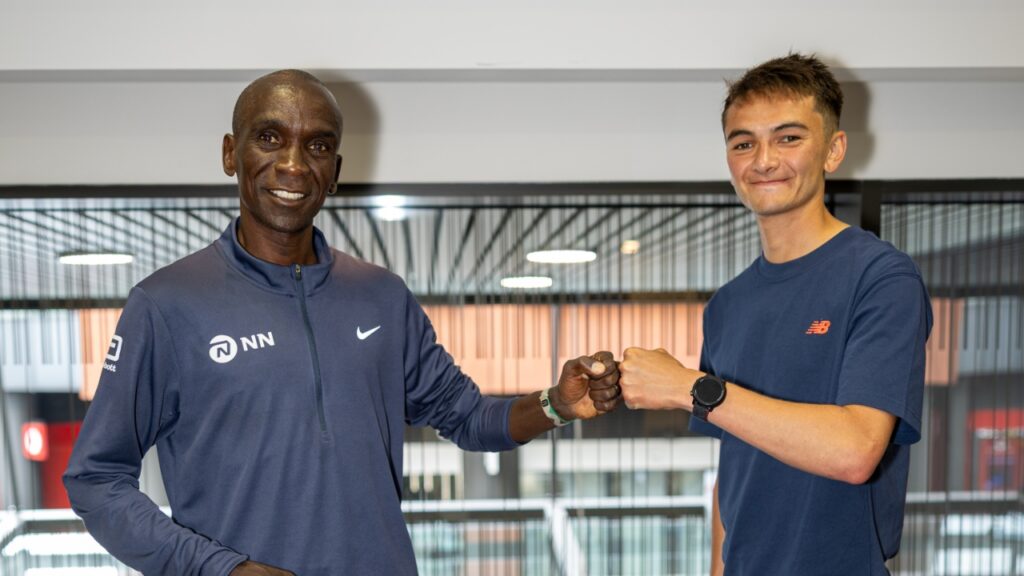Alex Yee, the triathlete who gained recognition for his gold medal at the Paris 2024 Olympics, recently met with Eliud Kipchoge, a legend in the marathon world, after Yee’s debut at the London Marathon. This interaction highlighted the interconnectedness of distance running and the importance of mentorship in elite sports. Both athletes clocked impressive times during the marathon, with Yee finishing in 2:11:08 and Kipchoge, the reigning champion, in 2:05:25. Their performances underscore the nuances that elite runners must navigate, especially as they transition between different race formats and distances.
Yee’s marathon debut marked an expansion into unknown territory, diverging from his primary triathlon events. His dialogue with Kipchoge revealed shared philosophies regarding training and competition. Kipchoge’s approach emphasizes authenticity, discipline, and a methodical understanding of endurance, aspects that Yee aspires to integrate into his own training. This exchange not only enriches Yee’s perspective but also illustrates the value of collaboration and learning from established athletes.
The two athletes discussed performance metrics, particularly Yee’s stride length, which he recognized as an area for improvement based on the data gathered during the race. This focus on detailed analysis is crucial for athletes aiming to optimize their performance, particularly in the strenuous environment of mountain running where elevation, weather, and trail conditions can drastically influence a race’s outcome. Understanding such metrics can aid in refining one’s form and pacing strategy, both vital for successful ultramarathon performances.
Kilian Jornet, another prominent athlete in endurance sports, acknowledged Yee’s achievements, highlighting the importance of peer recognition in the ultrarunning community. Jornet is known for his unique philosophy that transcends traditional racing boundaries, focusing instead on the art of movement through varied terrains. This mindset is particularly useful for ultrarunners who often face multifaceted challenges during races, from technical descents to grueling climbs, making adaptability and resilience key attributes for success.
Yee has also turned his attention to increasing visibility for triathlon and endurance sports through digital platforms, such as his YouTube channel. By sharing his training journey, he not only communicates the complexities of performance under pressure but also makes the sport more relatable to a broader audience. This openness encourages new athletes to delve into endurance sports, reinforcing the sense of community that these events foster. Engaging with audiences through social media can serve as a valuable training tool by allowing runners to analyze their experiences and translate them into actionable insights.
As Yee gears up for future races, including a return to track competition with the British 10,000m Championships, his focus remains on maximizing his performance across disciplines. The decision to prioritize recovery while still engaging in running is a strategic one, reflecting an understanding of the balance needed to sustain high-performance levels throughout the competitive season. Ultramarathon runners can learn from this strategic recovery, ensuring they maintain their training intensity while allowing adequate time for physiological adaptation.
In the ultra-running scene, understanding pacing and race strategy becomes increasingly crucial, particularly in mountainous terrain where elevation gain can dramatically affect energy expenditure and recovery times during competition. Runners must remember that external conditions, such as weather variability and trail composition, can further complicate pacing strategies. This makes the discussions between seasoned competitors, such as Yee and Kipchoge, pivotal in disseminating collective knowledge and experience.
One vital takeaway from Yee’s experiences and interactions is the significance of data-driven training. Analyzing performance metrics allows for targeted adjustments that can enhance efficiency and endurance during both training and racing. For serious runners preparing for mountain ultras, focusing on metrics such as heart rates, stride length, and cadence can lead to improved race outcomes. Adopting a data-informed approach may well be the narrow edge needed when tackling the unique challenges presented in ultramarathons, reinforcing the idea that continuous learning and adaptive training philosophies are paramount for long-term success in this demanding sport.
